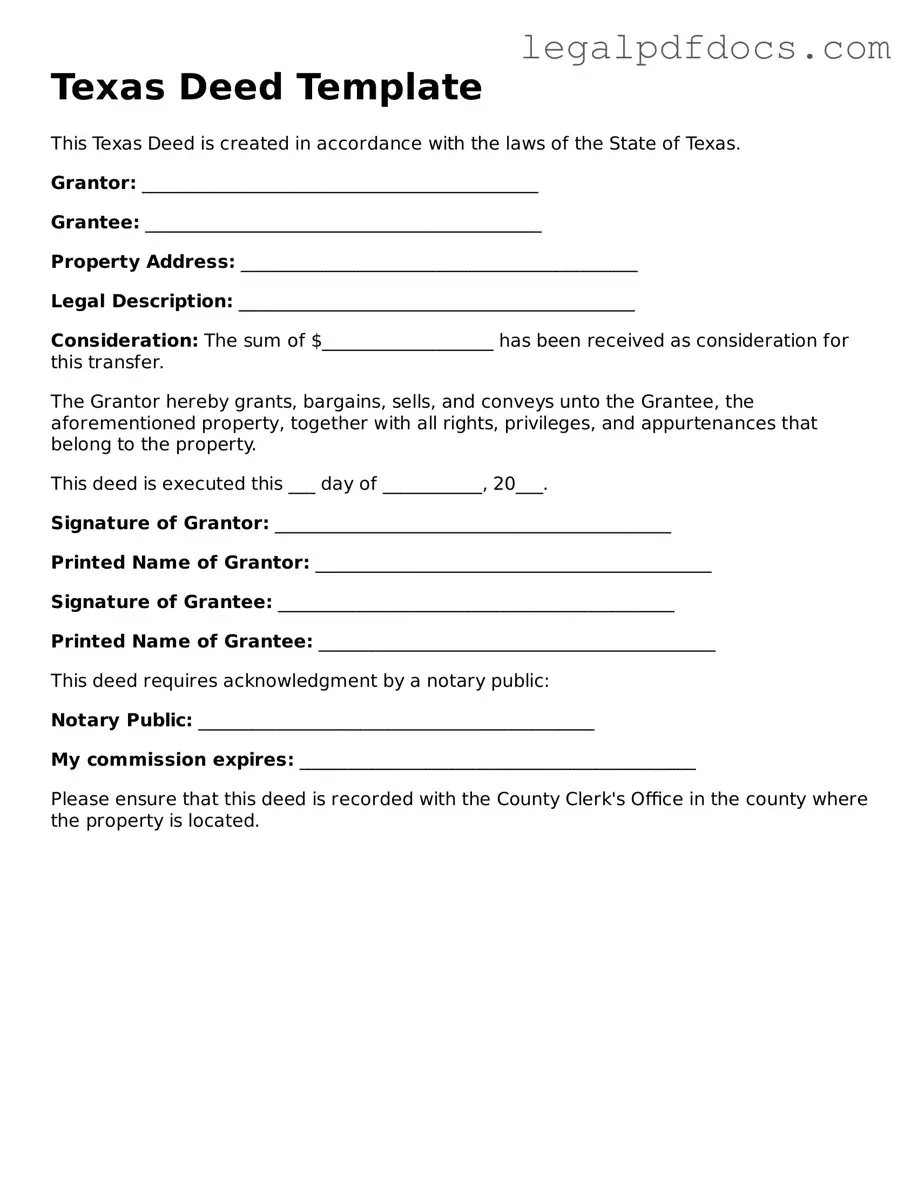Official Deed Form for Texas
A Texas Deed form is a legal document used to transfer ownership of real property from one party to another within the state of Texas. This form outlines the details of the transaction, including the parties involved and a description of the property. To ensure a smooth transfer, it is important to fill out the form accurately.
Ready to transfer property ownership? Click the button below to fill out the Texas Deed form.
Open Deed Editor Here
